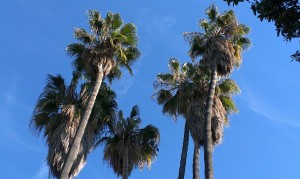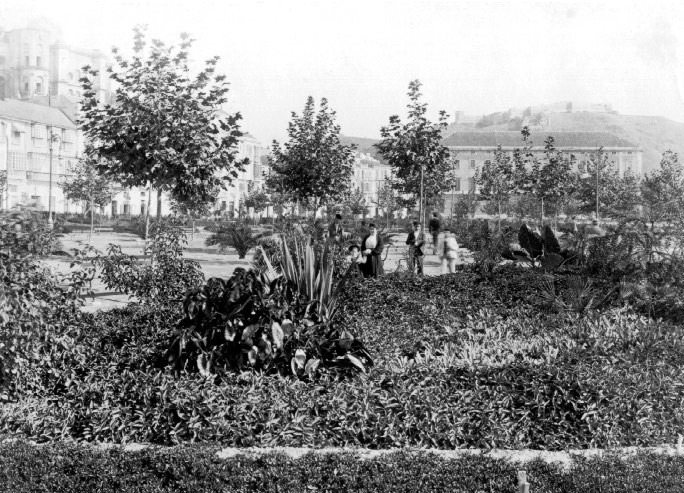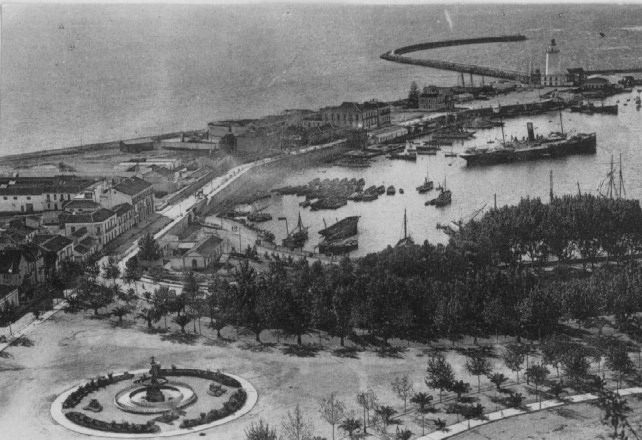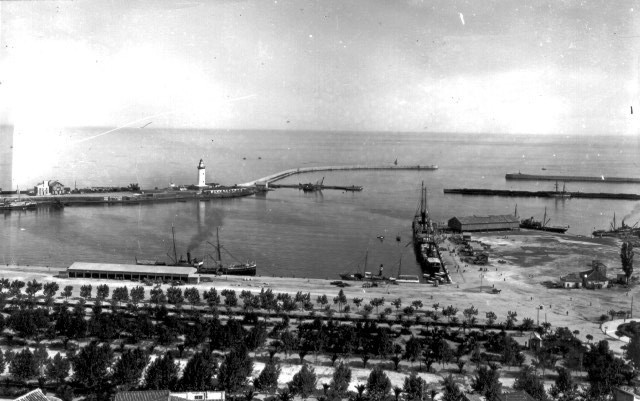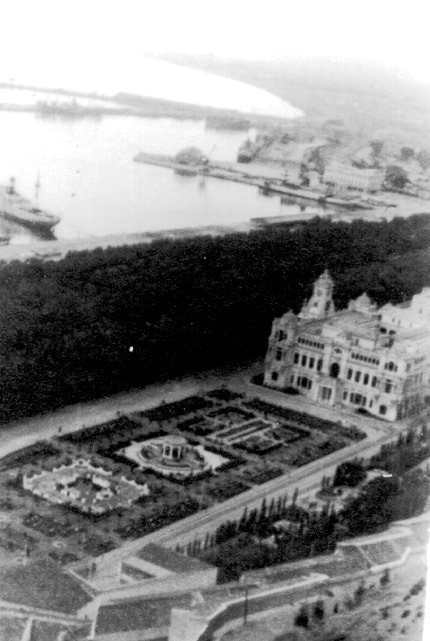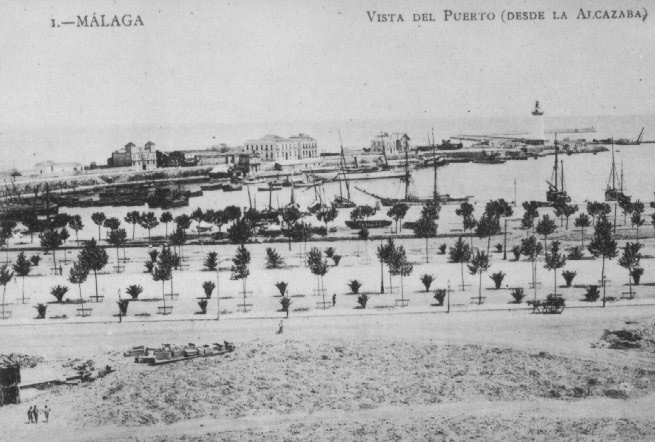
A very early view of the Parque, probably from the beginning of the 20th Century, showing the new plantings introduced.
Historical Development
The Parque de Malaga is over 100 years old, and its beginnings can be traced back to the end of the 19th Century. Reading about the history of the Parque, it’s clear that the project was the result of a series of convergent political, economic, social and environmental factors at the time which, whether by accident or design, led to its creation.
Like many late C19th cities, Malaga was experiencing rapid urban and industrial growth. Traditionally a wine growing region however, the area had just suffered from the ravages of the Phylloxera pest, and there was therefore the incentive to look towards creating other forms of employment. The new trend towards “Tourism” was one, and Malaga’s sheltered coastal position and it’s balmy climate was certainly an asset in this respect.
Much of Malaga’s economic growth at that time was driven by the influential Larios business family. (Tourists visiting the area will no doubt wander up the beautiful and impressive central “Calle Larios,” the principal shopping area and heart of the city).
However, the city also had political influence in Madrid in the form of reknowned local figure, Canovas del Castillo. It was able to petition the government on the project, and it was as early as 1896 that a government order decreed the beginning of works to redevelop the harbour zone in Malaga, which involved the reclamation of an area of land from the sea, from the Alameda tree lined avenue in the west to the lighthouse (Faro) in the east. More significantly, this new zone was designated specifically for non industrial use. It was to be landscaped into attractive gardens and harbour side walkways for the benefit of its citizens and tourists alike.
Land reclamation began in 1897, and although the first plants began to appear by 1904, records note that, without all of the modern technology and mechanisation that we have at our disposal today, the project was an arduous one, and was to continue piece by piece for the next thirty to forty years – earthmoving, irrigation, paving (asphalt roads were introduced in 1914 to aid motorised transport) and finally, planting (an impressive avenue of Plane trees was an early distinguishing feature, providing pleasant shade for the visitor. Sadly, these were all but destroyed through bad pruning in the 1980’s).
It’s also worth noting that many of the very attractive, classically designed buildings that thesedays one sees along the northern edge of the Paseo del Parque were added during this same era, between 1911 and 1940. The Town Hall, Correos, Banco de España, Casa del Jardinero – all variously described as being constructed in “Neo Barroco” or “Neo Mudejar” styles.
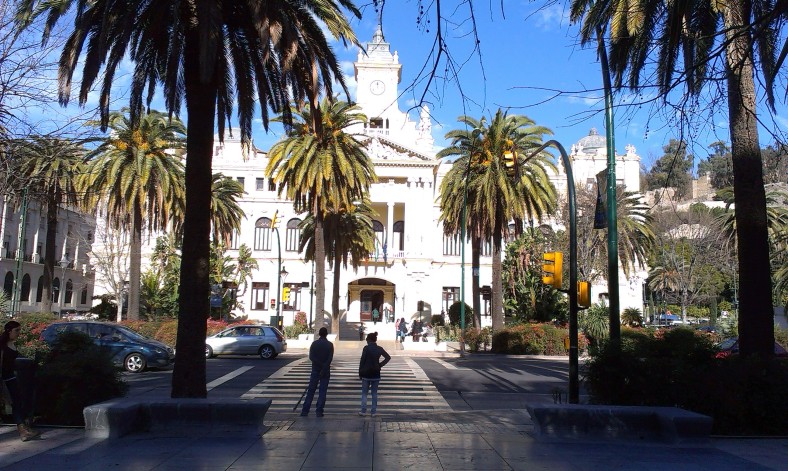
Architect Fernando Guerrero Strachan was an important protagonist in this development through his involvement in the Town Hall design and the creation of the nearby Jardines Pedro Luis Alonso and the Jardines de la Puerta Oscura, and I hope to add more information to this blog about all these detailed aspects of the Parque’s history.
Furthermore, of course, over time a collection of statues have appeared, dotted throughout the area, and dedicated to a series of Malaga dignitaries and celebrities – painters, poets, musicians, businessmen, military leaders, politicians and aristocrats (see the Statues and Monuments section of this blog).
Sadly, the aforementioned Canovas del Castillo would not live long enough to see the results of his labours on behalf of Malaga (he was assassinated in 1897), but the city has paid tribute to his efforts in the form of a statue which although it was originally located in one of the patio areas in the Parque, one can now find at the eastern entrance, by the roundabout and the bullring.
The Garden of the Five Continents…
In addition to the political and economic impetus behind this initiative, there was also a very clear horticultural “dynamic” during the late C19th. The reason why the Parque de Malaga stood out from other urban parks, and was therefore worth a visit and further study, is simply this – the rarity, diversity and maturity of its plants. Sheltered by surrounding mountains and warmed by the sea, not only could Malaga’s climate support a wide range of Mediterranean, sub tropical and tropical plantings, but its position as a port was ideal for bringing in specimens from abroad, in an era of plant hunting and interest in new species.
Crucially, the Parque was further supported by the existence of a horticulturally interested middle class in the area, with many individuals and private estates (including the stunning Jardin de la Concepcion just outside the city, now council owned and one of Spain’s leading botanical gardens) donating their own well-tended specimens to the project.
The Parque de Malaga was at once therefore both a form of job creation and a “hobby” for the middle classes, but significantly it was also very much part of the wider Parks and Gardens movement sweeping throughout Europe in that era. Whether the arguments put forward by the proponents of City Parks were social, moral, economic or public health based, there was nevertheless a growing realisation in the late 19th Century of the need to provide residents with open, accessible green public space in often overcrowded, ugly and unhealthy industrial areas.
In terms of the horticultural aspect to the project, crucially it was maybe only eighty years later, after many decades of neglect, that the botanical significance of the original plantings was realised. In 1987 a study was carried out by two Botanists at the University of Malaga, Alfredo Asensi Marfil and Blanca Diez Garretas, aimed at identifying and labeling all the plants on behalf of Malaga council. An excellent guidebook was produced, which nevertheless offered the opinion that…
“….The botanical descriptions included in this work represent the majority of the species but because of the extreme rarity of some of them, the list is not complete. The task was long and complicated as some examples were unknown to our team and to colleagues in other universities; they needed much enquiry and detailed search of specialised libraries and herbaria of subtropical and tropical flora….”
Maybe this one paragraph encapsulates just why the history of the Parque de Malaga is worthy of study and recognition !
As highlighted in the “Books and Further Information” section on this blog, the excellent work of Marfil & Garretas had become slightly dated over the years given the redevelopment of the area, with seemingly no updated information being available for some 25 years or more.
However, a new version of the book has now finally been reprinted and updated in 2014 (fascinatingly, by the same authors) and is widely available in local bookshops. The new edition includes a much more comprehensive history of the Parque including more of the original black and white photos, and maps. Many of these are publicly available through Malaga City Archives, and principally through the archive Legado Temboury from which I’ve posted a small selection of images on this page.
Recent Redevelopment
Recently the park has been subjected to a much needed redevelopment, funded in part through the EC (ERDF). Although the basic layout is the same, borders have been redefined, pathways improved, and whole new areas of stylish groundcover, shrubs, hedging and seasonal plantings have been introduced. Most, but not all, of the larger specimens remain, and many new ones have been added. Running hand in hand with this development has been an ambitious plan to renew the harbourside or “Muelle” area and surrounding gardens. You can read much more about all this in the “Recent Redevelopment” and “El Palmeral de Las Sorpresas” pages on this site.
The interest I’ve had in the area from 2010, and this blog, is really a personal attempt to chronicle as much new information as possible, and to add as many photos which might be of interest to the visitor. The original aim was to to update the 1987 report – as much as I was able – due to the lack of public information available. Hopefully now this blog can be seen to complement the 2014 publication and the new maps produced by Malaga Tourist Information. If it can aid the visitor’s interest and fascination about the area, so much the better !
The Parque has over a 100 years of history, but this recent redevelopment has shown that planners, politicians and citizens still value the area as a “green heart” of Malaga, and very much as a focal point for its urban planning policies in the 21st Century.
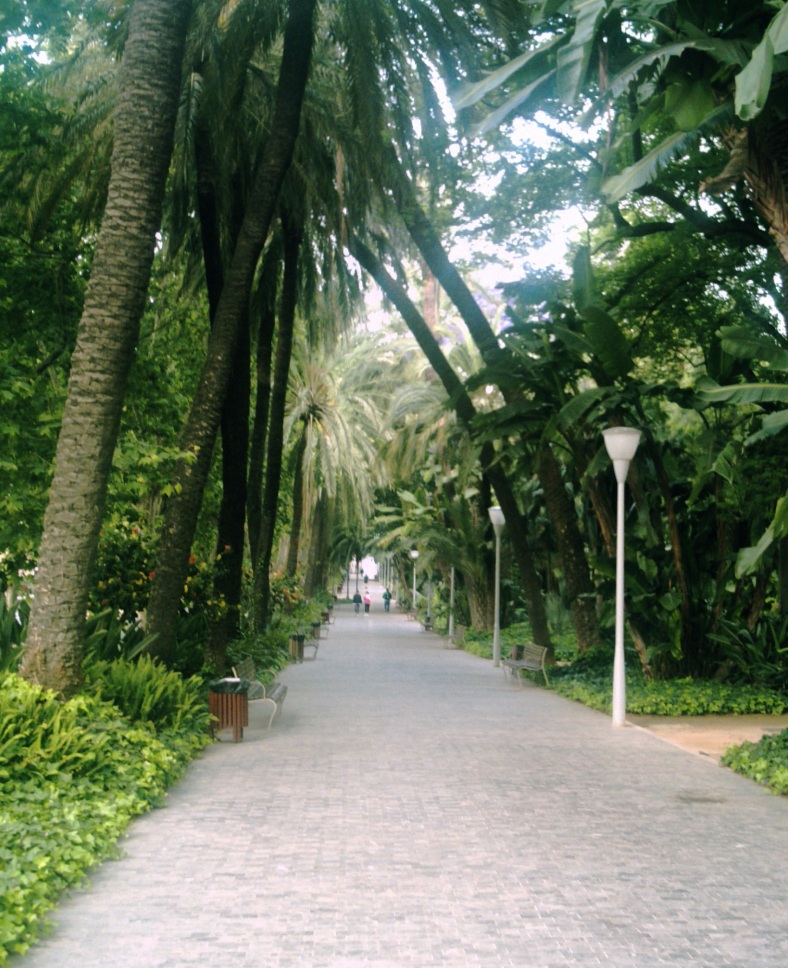
A 21st Century lower pathway area bordering the Paseo de las Curas
